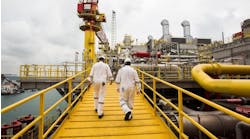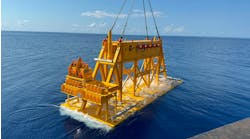Leonard Le Blanc
Alliancing and integration
Unable to influence low oil and gas prices or expand opportunities over the past decade, the petroleum industry moved to control the only thing available - costs. Costs were attacked from two directions - new technology and new ways of working together. Both efforts have been dramatically successful.Technology is on a roll now. Significant financial incentives for individuals and companies are closely linked to technical innovation. But, what about new ways of working together - the various forms of alliancing and partnering?
Alliancing's success has turned on allaying financial risks for both contractors and producers. However, the share-all requirement necessary to reduce contractors' contingency financial padding in cost-plus-bonus contracts has been the most difficult hurtle for contractors. Most contractors were distinctly uncomfortable sharing cost sheets and proprietary technology with potential competitors, and this includes asset owner personnel.
The alliance form of business took even more heat when the type of contract was a work-for-equity or share-of-production. The argument made by many contractors was that they were trading one form of risk for another, one for which they lacked knowledge and diversification. Large contractors, forced to play the alliance game during hard times, saw an early benefit in the elimination of some competitors. Small contractors, greatly exposed in alliancing arrangements, were vulnerable to acquisitions and mergers. In addition, entry costs were high for new competitors.
As oil and gas prices strengthened last year, contractors felt less compelled to offer equipment or services for marginal or unreliable returns. Today, alliances aren't dead, but the survivors fall into two broad categories:
- Satisfactory relationships: Ongoing arrangements that have produced good relationships, good teams, cost-cutting methods, or a reliable flow of income for contractors will continue. From a contractor's point of view, the teams provide a hedge against falling oil and gas prices and a valuable insight into a producer's business. From the producer's viewpoint, it assures predictable (but higher) prices and equipment.
- Equipment critical projects: Where the investment return risks can be jeopardized by inability to secure equipment on a timely basis (frontier E&P, multilateral drilling and completion, new technology applications), producers are providing attractive terms to encourage alliances with contractors.
Gas glut - no problem
The natural gas glut expected to hit US markets in the 1999-2000 time frame, despite all the implied negative baggage, will bring an unintended benefit - market expansion. There is nothing like consumer belief that natural gas supplies will last forever and remain an inexpensive form of low-carbon greenhouse gas to expand distribution lines and convert users of other energy forms to gas. Also, environmental groups continue to pound on findings that residential heating with high-carbon fuels (coal and oil) contribute as much as two-thirds of man-made atmospheric carbon dioxide, and should be replaced by renewable forms of energy, or alternately, low-carbon gas.A third factor that should help expand gas markets is the size of gas price differentials across the US during the winter of 1995-1996. New trunklines are being built or converted from oil or product lines to smooth out transcontinental supply discontinuities, which will encourage new distribution capacity.
A fourth factor will be the need to replace nuclear capacity. Nuclear plants will begin hitting their intended life span after 2005. Power generating companies such as Duke Power (54% supplied by nuclear) are planning early for alternative energy sources by buying gas production capacity.
A fifth factor is the cap being placed on new hydro generating capacity in Canada and the US. Hydro power, long the darling of advocates of renewable energy sources, is now in the environmental doghouse. Hydro damming usually means the loss of agricultural land, forest, or wildlife. Capital availability for proposed hydro facilities is withering in the face of environmental opposition.
Despite weak natural gas prices that will develop as more supplies hit the market, the long-term prognosis for gas market expansion in North America is very positive.
Copyright 1997 Oil & Gas Journal. All Rights Reserved.


